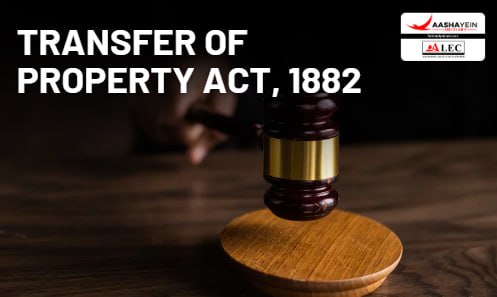Attestation plays a crucial role in property transactions, ensuring that the execution of a transfer document is genuine and legally valid. In the context of property law, attestation involves witnesses verifying that the transferor has signed or executed the deed of transfer. This process safeguards the legitimacy of property transfers and prevents fraudulent claims.
Oral and Written Transfers Under the Transfer of Property Act
Property can be transferred either orally or through a written document. Section 9 of the Transfer of Property Act provides for oral transfers, stating that a property transfer does not necessarily have to be in writing unless the law explicitly requires it. However, when a transfer is made through a document or deed, the individual executing the transfer is referred to as the executant.
Role and Importance of Attestation
For a property transfer document to be legally recognized, at least two individuals must witness and confirm that the executant alone has signed or written the deed. This process is called attestation, and the individuals serving as witnesses are known as attesting witnesses. The primary purpose of attestation is to verify the authenticity of the document and prevent disputes regarding its execution. By ensuring that the transfer deed is properly attested, the law provides greater security and transparency in property transactions.
You can also read the latest judgment by visiting [Latest Judgment].
For more information, visit [Aashayein Enquiry Section]
Legal Requirements Under Section 3 of the Transfer of Property Act
For an attestation to be legally valid under Section 3 of the Transfer of Property Act, certain essential conditions must be met. Firstly, an attestation requires the signatures of two or more witnesses. These witnesses must sign the document in the presence of the executant, ensuring that the execution is properly observed and verified.
Additionally, each attesting witness must either personally see the executant sign the document or affix a mark (such as a thumb impression), or witness another person signing on behalf of the executant in their presence and under their direction. Alternatively, a witness can validate the attestation if they have received a personal acknowledgment from the executant regarding their signature or mark, or that of another person signing on their behalf.
There is no prescribed format for attestation, and any individual who has attained majority age and is of sound mind can act as an attesting witness. However, registering officers, scribes, or typists cannot automatically be considered attesting witnesses unless they specifically intend to act as such and have either witnessed the signing themselves or received the executant’s acknowledgment of execution.
Restrictions on Attesting Witnesses
A party to the transaction cannot serve as an attesting witness, as an attestation by a party to the document is considered invalid. However, a person who is not a party to the transaction but has an interest in the transaction can be a competent attesting witness. For instance, in Kumar Harish Chandra v. Bansidhar Mohanty (AIR 1965 SC 1738), the Supreme Court ruled that a third party who advanced mortgage money, despite not being the mortgagee, was interested and thus a valid attesting witness.
Likewise, if a property is transferred under a power of attorney, the agent executing the document cannot act as an attesting witness, as they are already a party to the transaction.
Mutual Presence of Executant and Witnesses
For an attestation to be valid, not only must the executant sign the document in the presence of the attesting witnesses, but the witnesses must also sign in the presence of the executant. This principle was affirmed in Abinash Chandra v. Dasarath (AIR 1929 Cal 123), where the court held that an attestation cannot be considered valid if it occurs before the executant has signed the document. However, it is not necessary for all witnesses to be present at the same time or for them to stand in close proximity to the executant.
A unique situation arose in Lala Kundan Lal v. Mushrafi Begum (AIR 1936 PC 207), where the executant was a pardanashin (veiled) woman who placed her thumb impression on the deed from behind a curtain. The attesting witnesses saw her hand emerge and affix the impression, after which her husband signed the deed, followed by the witnesses. The court ruled that this constituted a valid attestation, as the witnesses had signed in the presence of the executant, even though she remained behind the curtain.
Judicial Interpretation of Attestation Validity
The question of whether an attestation is valid is a mixed question of fact and law. This means that determining its legitimacy requires examining both legal principles and factual circumstances. Furthermore, objections regarding the validity of attestation cannot be raised for the first time on appeal, as held in Briju Raj Singh v. Sewak Ram (AIR 1999 SC).
In summary, valid attestation under the Transfer of Property Act requires proper execution in the presence of witnesses, compliance with legal requirements, and adherence to judicial interpretations that emphasize transparency and authenticity in land transactions.

